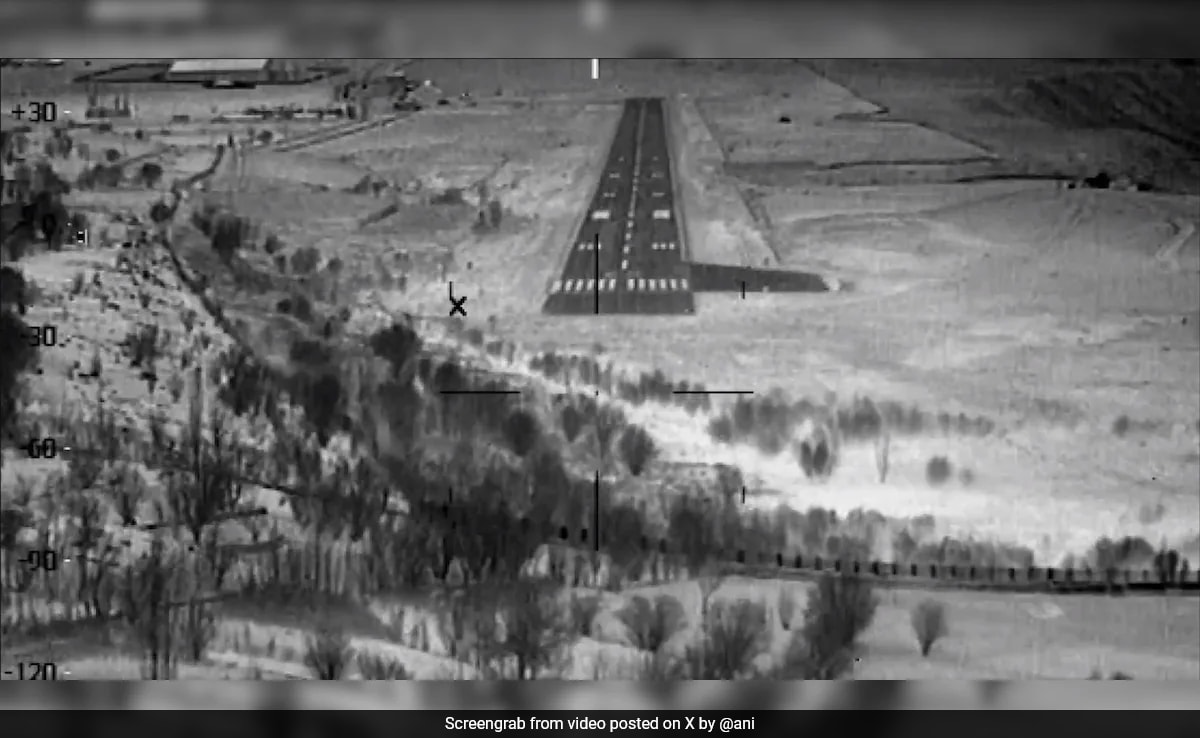2024-01-07 13:22:55

Kargil airstrip is strategically positioned between Dras on the west and Batalik on the east.
New Delhi:
The Indian Air Force successfully conducted a night landing of the C130-J transport aircraft at the Kargil airstrip. This marks the first time a night landing has been carried out at the airstrip, situated near the Line of Control (LoC) in the Ladakh region.
The C-130J Super Hercules aircraft, manufactured by US aircraft maker Lockheed Martin, is an advanced tactical airlifter utilized by the Indian Air Force (IAF) for special operations and humanitarian crises. The night landing of the C130J is significant for the Air Force in many ways.
In a first, an IAF C-130 J aircraft recently carried out a night landing at the Kargil airstrip. Employing terrain masking enroute, the exercise also dovetailed a training mission of the Garuds.#SakshamSashaktAtmanirbharpic.twitter.com/MNwLzaQDz7
— Indian Air Force (@IAF_MCC) January 7, 2024
Proximity to LoC
The Kargil airstrip is positioned at an elevation of approximately 9,700 feet and is located south of the LoC. During the 1999 Kargil conflict, when Pakistani troops crossed the LoC and seized a strategic height overlooking the Srinagar-Leh highway, the airstrip suffered damage from artillery bombing by enemy troops.
The airstrip is strategically positioned between Dras on the west and Batalik on the east, both major flashpoints during the Kargil conflict.
The Indian Air Force operated the An-32 multipurpose transport aircraft out of the Kargil airstrip but they didn’t have the night landing capability in Kargil. The aircraft has been used by the IAF to transport civilians from Kargil to Srinagar and Jammu during harsh winters. During the 1962 war, IAF’s 43 Squadron’s An-12s operated in Kargil, Leh and Thoise.
In 2002, the Western Air Commander, Air Marshal Vinod Bhatia was reported to have piloted an An-32 aircraft from the Kargil airfield into Pakistani airspace by accident. Pakistani troops launched a shoulder-fired surface-to-air missile, damaging the aircraft which limped its way to Leh. This incident occurred amid heightened tensions between India and Pakistan following the 2001 Parliament attacks and border tensions during Operation Parakram.
In this operation, the Indian Air Force used C-130J to airlift the Garud commandos, a special operations unit of the IAF, signifying that troops can be airlifted even at night for clandestine or covert operations.
Terrain Masking
In addition to the use of night vision goggles and infrared thermal imagery for landing, which assists pilots in landing at night but presents challenges such as affecting depth perception, the use of terrain is crucial. Terrain masking is a tactic employed by pilots to hide from enemy radar, utilizing natural or man-made terrain to block the line of sight of radar.
Terrain Masking is used to conceal an aircraft’s movement by carefully manoeuvring through the terrain. For reference, in the climax of Top Gun: Maverick, Tom Cruise flew his F-18 very low and through the narrow valley to confuse the enemy fighter jet’s targeting system. The tactic is also called “ground-hugging”.
In the case of C-130J’s night landing, the IAF used the surrounding hills to conceal their movement. The airstrip is surrounded by hills ranging from 14,000 to 15,000 feet. The exercise “dovetailed” a training mission for the Garuds.
In 2013, the C-130J landed at the world’s highest airfield at Daulat Beg Oldie (DBO) in Ladakh’s Depsang Valley. The air distance between the Karakoram Pass and the DBO Advanced Landing Ground is approximately 10 km which makes it strategically very important for India. The DBO airstrip was activated in 2008 when an An-32 landed after 43 years.
The Indian Air Force is upgrading the Nyoma ALD in eastern Ladakh to a fully-equipped airbase. Nyoma is approximately 35 km from the Line of Actual Control. The Thoise airstrip in Ladakh’s Turtok and the Fuckhe airstrip are other ALGs in Ladakh.
C-130J aircraft landing at Kargil airstrip,Kargil Airstrip,Indian Air Force Kargil,Kargil,Kargil 1999,IAF C-130J aircraft Night Landing,C-130J Night landing,Dras Kargil,Batalik Kargil,Leh
Source link
13 total views , 1 views today
